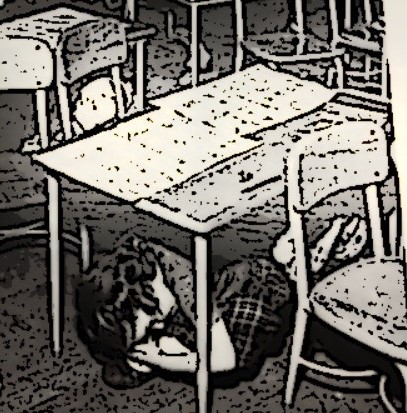
I was too young for the war of the sixties and seventies, and also too female, but not too young to understand what was happening. I knew older boyfriends and brothers were slogging through jungles while I did my French and Spanish homework. After a few years, I would know people who had seen the Tet Offensive and Operation Rolling Thunder. I spent a year with a boyfriend who had stories of Vietnam from back behind the front lines, a guy who had been in “intelligence.” Intelligence duties apparently included trying to figure out how to file — or lose — the report from soldiers who had placed an explosive rocket up a water buffalo’s rectum, blowing the poor creature into random chunks.
In December of 1969, the US government instituted a lottery system for drafting men into the army, the first such lottery held since World War II. Three-hundred-sixty-six balls* were placed in a large lotto-like, glass container, each ball labeled with a birthdate, to determine the order in which men between 18 and 26 years old would be called into active military service. This system still exists, waiting to be put back into practice: (See Lottery | Selective Service System : Selective Service System (sss.gov) for details.)
The lottery system sounds “fair,” in the sense that it’s based on luck. But the Viet Nam draft was never fair. During my high school years, my school’s high poverty rate and low college enrollment rate made my male classmates prime draft targets. College offered a student deferment, but many boys in then south Tacoma did not come from college families. They had never had college in their plans — though some changed those plans to include further schooling, while others fled to Canada. Draft discussions ate up time in hallways, lunchrooms, and afterhours gatherings. Draft, draft, draft and the luck of an early or late birthdate dominated conversations during key periods of the war.
Eduhonesty: Flip to 2022. The discussions are just beginning, a low drone so far. Young men in high school are googling draft information. Young women are reassured that women are not included in any possible draft — though some are aware that a law intended to add them to the draft only recently failed to be passed. The courts have also suggested a gender-based draft may no longer pass muster. (Can women be drafted for war? (the-sun.com))
It’s early yet, but as we keep moving to support Ukraine, this topic is likely to gain momentum. I don’t recommend bringing it up. That will legitimize a still nascent fear that most likely will come to nothing. And our kids are so worried. The last few years have ensured a high level of anxiety in already-jittery students.
But I would prepare my “this is why you should not be worried” speech, my “we are a long way from boots on the ground” and “the current army should be able to meet any military needs without instituting another draft” speech. Because the topic has been edging into timeliness for weeks now. In these convoluted times, we owe our kids the benefit of a reassuring adult perspective. These kids grew up with Lone Survivor, Fury, JoJo Rabbit, Dunkirk, and Hacksaw Ridge, after all, not to mention decades of older war movies.
I do suggest we wait for them to bring that topic out into the open. We can create the very fear we are trying to assuage. I don’t believe atomic bomb duck and cover drills of the fifties and sixties made students safer, but they certainly made them much more frightened of nuclear annihilation. As we cowered below our desks with our heads on our knees, waiting for the roof to fall, at least some of us believed that roof might actually fall.
I suggest the draft as one topic we ought to hash out in our minds before it enters our classrooms. Hugs from the Blue Room, Ms. J
*February 29th is the reason why the year does not match the number of balls.
